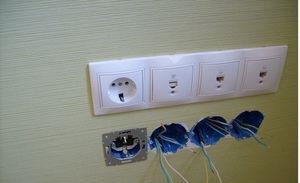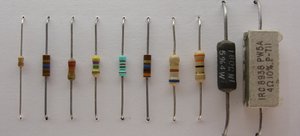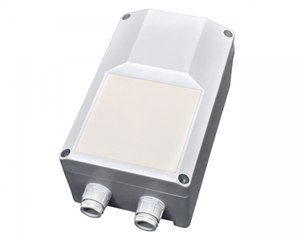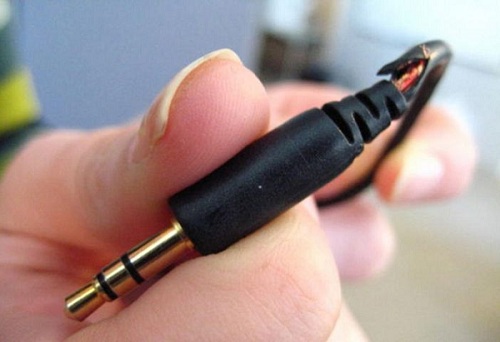
Repair the headphone plug with your own hands
Quite often the wire breaks on the headset, corresponding to the plug - according to experts, this is the most common defect, which occurs due to frequent bends and various mechanical damage.
Inside the cable are several very thin and delicate wires, which can easily break from strong tension or jerk. You can repair the headphone plug yourself, and what is needed for this?

Preparation for work
To repair headphones with your own hands, we need:
- non-conductive adhesive or epoxy resin;
- a special heat-shrinkable tube is an alternative to insulating tape;
- old fountain pen;
- tester (multimeter);
- soldering iron with a thin sting and all related components (lead, rosin);
- side cutters;
- mounting knife;
- lighter.
It is better to use fabric glue, if no epoxy is found, which will need only a few drops.
Repair algorithm
You can repair a lot yourself - here the main desire and ability to work with different tools. Consider the whole process in stages.
- We bite off the plug with side cutters, stepping back from him on 2-3 cm.
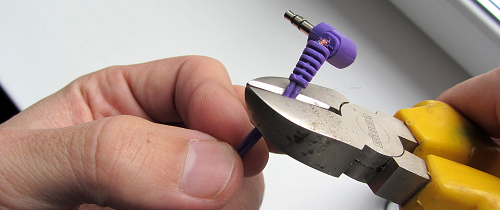
- We take out from the soldered socket the plug of earphones and a piece of an old wire - for this purpose we simply cut a cover on a seam a sharp assembly knife.
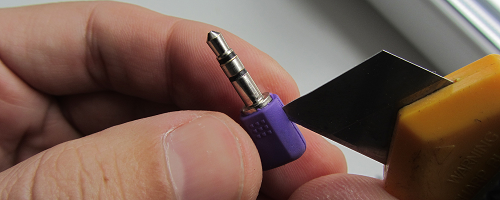 Now we can see, where the wires are soldered to the plug - take a photo for memory, so as not to confuse anything later. However, there is a standard soldering of wires, coming from the headphones: copper (yellow) color - general, green - left earphone, red - right.
Now we can see, where the wires are soldered to the plug - take a photo for memory, so as not to confuse anything later. However, there is a standard soldering of wires, coming from the headphones: copper (yellow) color - general, green - left earphone, red - right.
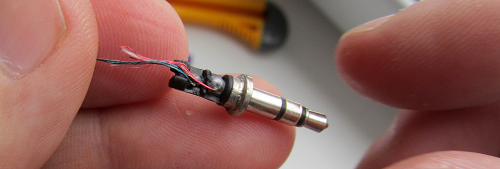
- Cut wire, leading to the headphones, we release from a varnish covering, clean and tin the ends of the wire, we connect the ground of each channel together.
 Check the plug for a short circuit, having previously removed the remnants of tin. The layout of the channels is presented in the photo:
Check the plug for a short circuit, having previously removed the remnants of tin. The layout of the channels is presented in the photo:
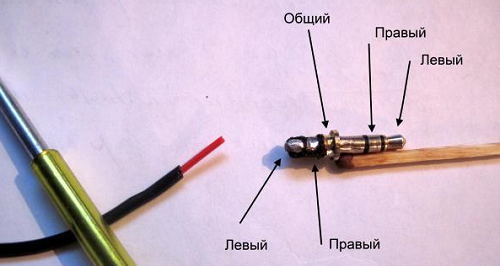
- We take the old pen, we disassemble it and we use only a tip - from it we will make the new case for the plug disassembled by us.
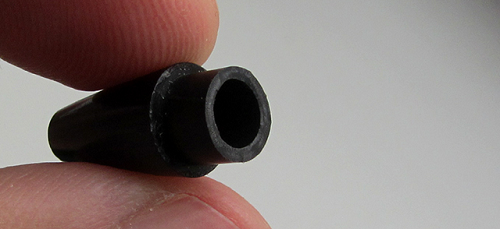
- Side bites bite the right length of heat-shrinkable tube, which instead of insulating tape will protect wires from a sharp bend at the very exit of the new plug.
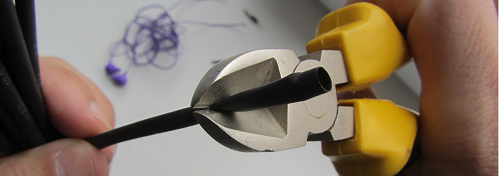
- We put the future case on the wire, then the handset, proceed to the final installation. How to solder wires, not to confuse anything? To do this, take a photo taken earlier.

- First, than to pack everything in a tube with heat-shrinkage, we do a check - we put on headphones, with the probes of the multimeter alternately touch the contacts of different channels, they should hear rustling or clicking. You can try plugging an unfinished design into the phone jack and turn on the radio. If you connect to an MP3 player to listen to music, then you can check, using balance, how each channel works.

- At positive result of check we put on a place of the soldering tube and by means of open fire of a lighter we "compress" it, so that it grips the open part of the plug firmly, as shown in the photo.
- Dilute a few drops of epoxy, apply it to the tube, we put on the case, and set aside for several hours for complete polymerization of the components.
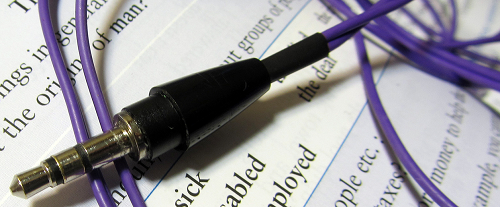

That's the whole process, how to fix headphones from mobile phone or laptop headset.
Soldering schemes for the number of wire cores more than two
Users are often interested, whether it is possible to fix earphones of more difficult design, when there are more wires inside? A different number of wires can fit into one plug, depending on the class of headphones:
- mono - 2 wires, it's hard to confuse something here;
- stereo and mono - three wiring and different wiring diagrams;
- stereo headset - 4 PC.;
- headset or earphones with microphone - 5-6 PC.
Now about each class, except the first, we will tell in more detail.
Three lived
Each headphone must have two cores in the same braid or in different braids, - this is a plus and a minus. Sometimes at the end, when connected to the plug, the designers combine the negatives into one harness and it comes out 3 pieces. To make it clear to all users, we give a detailed scheme of unsoldering the plug, where visible, where exactly you need to solder wiring in accordance with their color design.
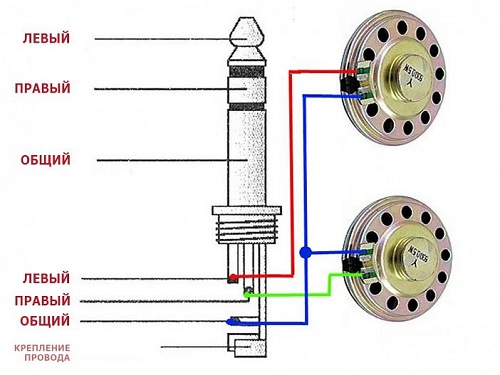
There is no strict standard of color varnish coating. Example, the wires of the left channel may be blue, white or green.
Four lived
There are two different options.
- Ordinary headphones without a microphone and control buttons. They are connected to the plug 4 wiring: minus each copper-colored speaker and plus (blue with red or green with red). For convenience, the disadvantages are twisted into one bundle and the result is three veins, which need to be soldered to their specific places.
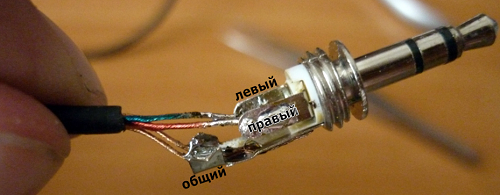
- Headset with microphone. Here the plug has 4 types of contacts: one from each speaker, one for the microphone and there is room for soldering the common wire or ground. Schematically, such soldering is as follows:
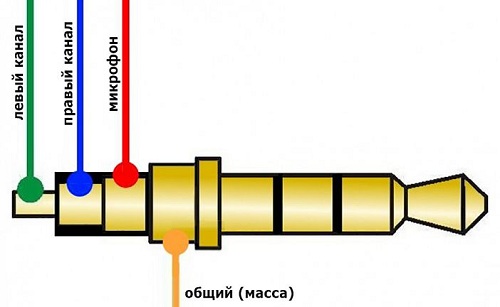
Importantly! At first glance, the microphone cord looks like, as one lived, but in fact there are two of them: very thin vein in polyvinyl chloride sheath wrapped on top with copper wire with colorless enamel for protection.
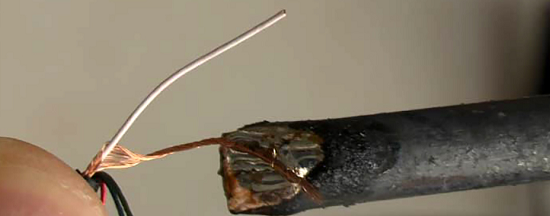
5 lived and more
In different types of the wall of the last class can be from 5 to 10 individual veins, so it will be much harder to navigate. The signal wire from the microphone is always in a braid of the same color, and others come in all sorts of shades. No expert will tell you for sure, which wire where to solder. How to replace the wire from the plug on the headphones in this case? Only this technique works here: check each vein with a multimeter, to determine to the left or right speaker it goes, then we find common, ob'єdnuєmo in one jgutik.
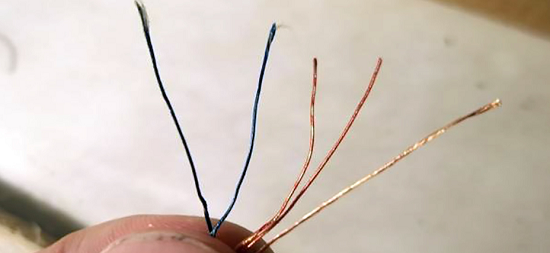
It is necessary to solder to the plug according to schemes, which we showed, or find a separate scheme on the Internet, which is suitable for your case.
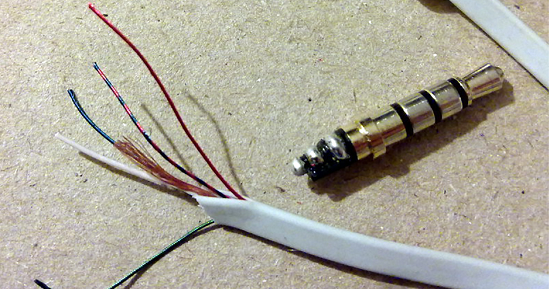
Repair your headset or headphones in this way and save money from your home budget.

